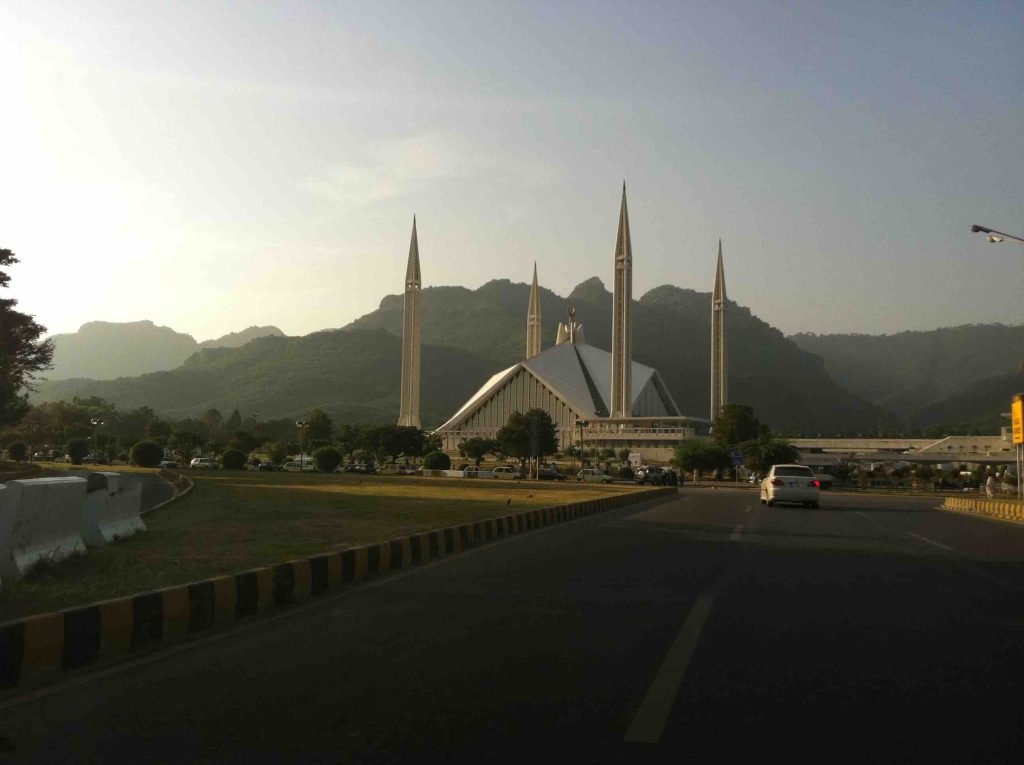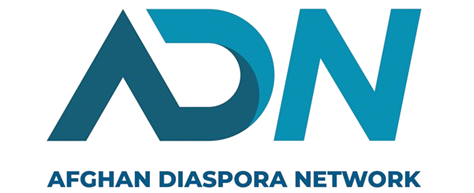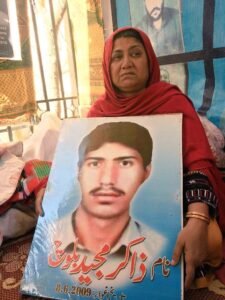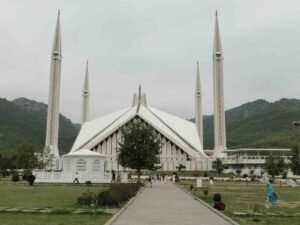The Growing Challenge of Drug Addiction: A Menace to Society and Public Health

Faisal Masjid, Islamabad Photo: @Ali Ahmad
By Kadeem Baloch
Pakistan, a country plagued by numerous complex social and political issues, is currently grappling with a growing and formidable challenge of drug addiction. The prevalence of cannabis is regarded as the country’s most widely consumed illicit drug, which is closely trailed by increasing consumption of opiates (including both opium and heroin). Compounding this issue is the alarming rise in intravenous drug administration, coupled with the dangerous practice of sharing needles, which creates a conducive environment for the rapid spread of blood-borne diseases, further exacerbating the already distressing public health crisis.
According to a United Nations report published in October 2022, the count of individuals grappling with addiction in Pakistan stands at a staggering 7.6 million, with males comprising 78 percent and females making up the remaining 22 percent. The country witnesses a relentless surge in the number of addicts each year, with an annual increase of approximately 40,000. This alarming trajectory earmarks Pakistan as one of the most severely ravaged nations afflicted by drug addiction globally.
As reported on June 5, 2023, the pervasive circulation of drugs across educational institutions in Sindh, acts as the final brick in its wall of destruction. Despite the local government announcing several declarations aimed at eliminating the possession, sale, propagation, and consumption of drugs from Karachi, the problem has continuously aggravated, to a point where drug abuse has infiltrated the education system, in schools and colleges. Moreover, the problem of drug addiction in schoolchildren of Karachi is growing immensely, so much so that while previously most rehabilitation centers were only receiving high school students, many are now even treating students as young as fifth graders. Like most of the social evils, this menace of drug addiction is pervasive throughout the length and breadth of Pakistan and the pervasive drug culture poses a formidable challenge to the country’s social fabric.
A startling revelation by a non-profit organization unveils a deeply troubling reality, disclosing an escalating drug addiction crisis among children in Peshawar. From 2010 to 2018, Peshawar alone witnessed an alarming rise in juvenile drug dependency, with a tally surpassing 5,000 afflicted children, and has only risen ever since. As per sources, about 500 to 600 children contact rehabilitation centers annually, with ages ranging from 12 to 18 years, and are mostly garbage and scrap collectors and beggars. Similarly, the rate of addiction amongst women has risen ten-fold in Khyber Pakhtunkhwa but sadly, as per sources, only about 2 percent, of women reach out for treatment in private clinics or rehabilitation centers.
The Drug Epidemic: A Closer Look at Punjab and Balochistan
The maximum number of intravenous drug abusers among all provinces is in Punjab which includes a high ratio of polydrug abuse amongst addicts in Lahore using and mix of opium and heroin. Meanwhile in Lahore, according to the latest report, at least 460 drug addicts died on the sidewalks, streets, and parks during the past year. The consultant of a social organization, Syed Zulfiqar Hussain, is of the opinion that it was estimated that 80 percent of the drugs in the city were ordered through mobile phones and WhatsApp. There were many cases of addicts not only committing robberies to buy drugs but also attacking their parents, spouses, and children, or even killing them. In Lahore drug abuse is more predominant in Muslim Town, Shimla Hill, Regal Chowk, Panorama Center, Mall Road, Mozang, Ganga Ram Hospital, Ali Park, Data Darbar, Bhati Gate, Taxali Gate, Bird Market, Chauburji, Lal Pul, Sabzazar, Thokar Niaz Baig Kahna, Wahdat Road, Mughalpura, Ekmoriah Bridge, Railway Station, Misri Shah, Shadbagh, Lorry Ada, Badami Bagh, Shahdara, Imamia Colony, Multan Road, Dharampura, and Ichhra.
The dark shadow of drug trafficking has loomed heavily over Balochistan where the scourge of heroin was introduced in the aftermath of the Afghan war in the early 1980s. Thousands of youths have fallen prey to it. A staggering 90% of the world’s opium is cultivated in the neighboring Helmand province of Afghanistan. Most of the drugs are smuggled to the Gulf States, Iran, and various European countries through the remote and concealed routes that crisscross Balochistan’s rugged terrain, turning it into a hub of the global narcotics trade.
The Drug Trafficking Network: Balochistan’s Troubling Reality
Reports indicate that the web of drug trafficking spreads across Balochistan with as many as seven critical drug trafficking paths traversing the province forming the arteries of this illegal network. The Zhob route, in particular, has earned the notorious distinction of being one of the principal drug trafficking highways in South Asia. This route underscores the significance of Balochistan in the intricate web of international drug trafficking operations.
Highlighting the severity of the problem in 2022, Jahangir Kakar, the Director-General of Excise and Taxation and Narcotics, revealed a troubling statistic. A staggering 280,000 individuals were estimated to be in the clutches of addiction, 80% of whom were under the age of 40. Such is the pervasiveness of this epidemic that there isn’t a single street in Balochistan free of the plight of drug addicts. This deplorable situation is further compounded by the widespread use of unsafe drug consumption methods, such as shared medical syringes, exacerbating public health crises such as AIDS and Hepatitis. This underscores the urgent need to address not just the supply chain of this illicit trade but also its human toll, and the myriad health crises it spawns.
One of the major reasons behind the free flow of drugs in Pakistan is the bordering country of Afghanistan, which is infamous for various drugs including poppy, and in most cases, Pakistan acts as a conduit for smuggling of drugs originating in Afghanistan to the rest of the world. Reportedly in late 2021 and early 2022, at Torkham on the Afghanistan-Pakistan border, customs seized an “unprecedented” number of drugs, counting a record 130-kilogram haul of heroin. October 2022 also saw one of the largest meth seizures in Peshawar’s history. Earlier, in May alone, Pakistan’s Anti-Narcotics Force made a massive bust of more than 1 metric ton of opiates and 255 kilograms of meth in the province of Balochistan, whereas the Pakistani Navy seized 4.5 tons of drugs in the northern Arabian Sea.
Another foremost cause of Pakistan’s alarming rise in drug use is that those in positions of authority, power, wealth, and control give them continuous backing. Pakistan is now both an importer and an exporter of drugs. Furthermore, the political unrest has inadvertently provided drug mafias with greater opportunities to distribute narcotics throughout the country without hindrance.
Since Pakistan already has a poor reputation for democratic administration, political instability throws open doors for the spread of drug usage among the population. In the Gazette of Pakistan 1997, the control of Narcotic Substances Act defines addiction as “A person physically or mentally dependent on any narcotic drug or psychotropic substances or a person who frequently uses narcotic drugs or psychotropic substances.” Yet, even after more than two decades, Pakistan is failing to protect its citizens from drug addiction.
A Multifaceted Crisis: Addressing the Societal Impact of Drug Addiction in Pakistan
In January 2023, a startling revelation came to light: an overwhelming 3,747 narcotics-related cases were either pending or under trial in Pakistan’s special courts for control of narcotics substances and the higher courts. Punjab bore the brunt of this problem having the highest caseload with a concerning 963 unresolved cases.
The state’s inability to effectively monitor its international borders, both maritime and terrestrial, has facilitated a thriving drug smuggling trade from Afghanistan. This unfortunate reality, coupled with the overwhelming number of unresolved legal cases, paints a bleak picture of the state’s capacity to offer sufficient legal protection and enforce its anti-narcotics measures.
Perhaps even more alarming is the vulnerability of school children, who are falling victim to this menacing scourge of addiction. The widespread infiltration of narcotics into Pakistani society, evident in this distressing trend, indicates a deeply troubling state of affairs. The current situation underscores the urgent need for comprehensive strategies, which not only tackle legal issues and border controls but also address the societal impact of this rampant issue.
In conclusion, the menace of drug addiction in Pakistan presents a multifaceted crisis, posing an unparalleled threat to the nation’s social fabric. The high prevalence of drug abuse, coupled with a significant increase in related health concerns, underscores an escalating public health crisis. While the law enforcement and judicial system struggle under the weight of unresolved narcotics-related cases, the unchecked border regions continue to serve as thriving corridors for international drug smuggling. The alarming trend of drug addiction among children and young adults further reveals the deep penetration of this epidemic into Pakistan’s society. Comprehensive and targeted interventions are urgently needed to counter this formidable challenge, which includes strengthening legal protection, enhancing border controls, and prioritizing public health strategies. It is only through such coordinated efforts that the nation can hope to break free from the grip of this devastating drug menace.
*The author chooses a pseudonym. Kadeem Baloch is a freelance journalist based in Pakistan.
Note: The contents of the article are of sole responsibility of the author. Afghan Diaspora Network will not be responsible for any inaccurate or incorrect statement in the articles.











